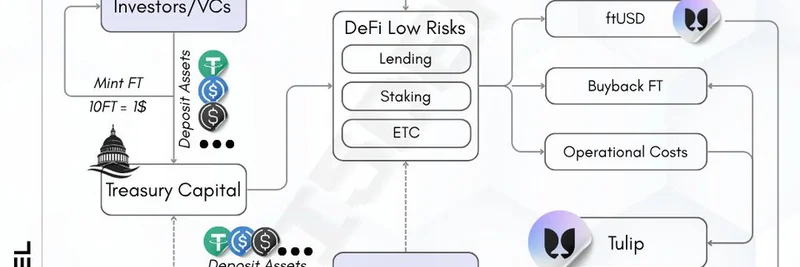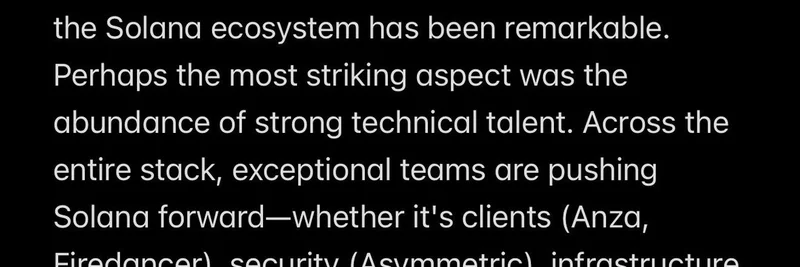In the ever-evolving world of DeFi, where capital inefficiency often leaves investors holding the bag, a new project is turning heads. Flying Tulip, brainchild of renowned builder Andre Cronje, is shaking things up with a model that prioritizes protection and alignment. Shared in a detailed thread by @eli5_defi, this blueprint flips traditional fundraising on its head. Let's break it down step by step, keeping things straightforward for anyone dipping their toes into blockchain waters.
What is Flying Tulip?
At its core, Flying Tulip is a full-stack onchain exchange built on SonicLabs. It's designed to tackle one of DeFi's biggest headaches: capital inefficiency. Think of it as a platform where investors and builders are finally on the same page, with incentives that reward long-term success rather than quick flips.
Key features include:
- $ftUSD: A stablecoin pegged to $1 that earns you 8-12% APY through yield farming. It's like a savings account on steroids, but in crypto.
- Adaptive Lending: Borrowing limits that smartly adjust based on market volatility and slippage, reducing risks for everyone involved.
- Oracle-Free Perps: Perpetual contracts settled using the exchange's own pricing, skipping the usual delays and oracle vulnerabilities.
- Unified Trading: Combines automated market makers (AMMs) with central limit order books (CLOBs), plus perks like account abstraction and gas subsidies for smoother trades.
- Cross-Margin System: One liquidity pool handles spot trading, perps, and options, making everything more efficient.
- Incentive Alignment: No pre-allocated tokens for the team—they only earn from actual protocol revenue, ensuring they're motivated to deliver.
This setup isn't just tech jargon; it's about creating a sustainable ecosystem where everyone's interests align.
How Does It Work?
Flying Tulip transforms raised funds into a productive engine rather than letting them sit idle. The workflow is simple: Raise capital, generate yield, fund operations, trigger buybacks, and build a revenue flywheel.
Here's the breakdown:
- Raise Funds: Targeting $1B, split 20% to VCs and 80% to the public.
- Deploy Capital: Invest in low-risk DeFi strategies like lending and staking, yielding 4-12% annually (potentially $40M yearly).
- Operational Funding: Use that yield to cover costs until the protocol starts generating fees from users.
- Put Option Protection: Holders can redeem $FT tokens for their original capital anytime— a perpetual safety net.
- Buybacks and Deflation: Selling or redeeming tokens routes collateral back into buybacks, shrinking the supply.
- Flywheel Effect: As revenue kicks in, it amplifies buybacks, creating a self-sustaining loop.
Why does this matter? Investors only risk the opportunity cost of their yield, not their principal. Plus, the token becomes deflationary right from launch, which could drive value over time in a market often plagued by inflation.
The Fundraising Model
Traditional DeFi raises often give teams massive token allocations upfront, leading to dumps and misalignment. Flying Tulip says no thanks.
Key elements:
- Token Supply: 10 $FT per $1 raised, capped at 10B total.
- Liquidity Rules: No vesting cliffs—tokens are fully tradable from day one.
- Team Alignment: Zero tokens for the team; they profit only from protocol success.
- Investor Safeguards: Every token comes with a built-in perpetual put option for redemption.
- Deflationary Mechanics: Redemptions and sales feed into buybacks, reducing circulating supply.
This model forces accountability—if the protocol flops, the team gets nothing. Critics point out the $1B fully diluted valuation (FDV) seems steep for an early-stage project, but supporters see it as a bold bet on real innovation.
Why Flying Tulip Could Be a Game-Changer in Meme and DeFi Spaces
Drawing from the historical tulip mania—a classic meme in financial history—Flying Tulip blends serious DeFi tech with tokenomics that could appeal to the meme token crowd. No rugs, protected capital, and a deflationary twist make it stand out in a sea of pump-and-dump schemes. While some question the ambitious raise, others praise it as a step toward mature, investor-friendly blockchain projects.
If you're into meme tokens with real utility, keep an eye on @flyingtulip_. What do you think— is this the future of DeFi fundraising, or just another flower in the garden? Dive into the original thread for more visuals and details.
Remember, this is not financial advice—always DYOR before jumping in.



